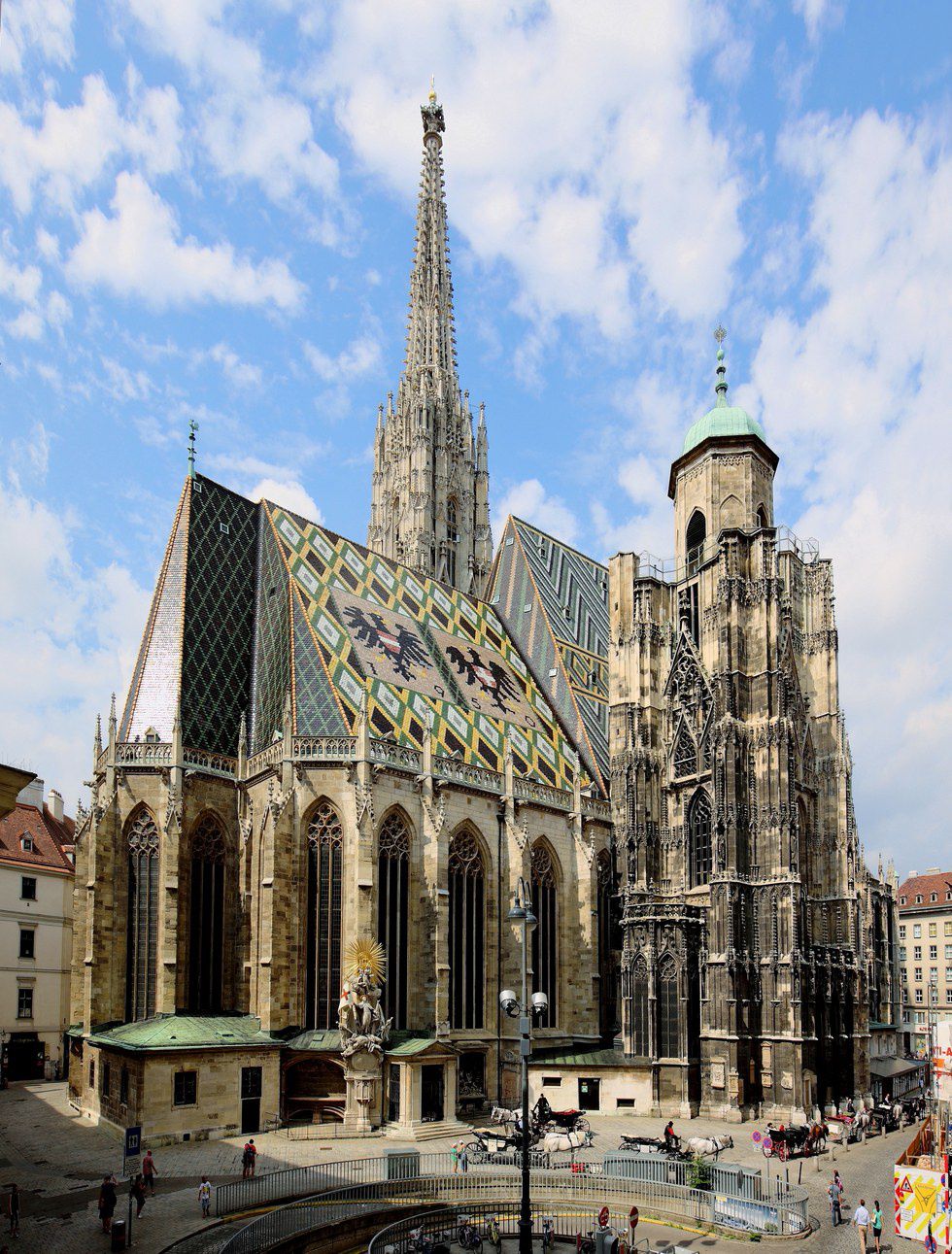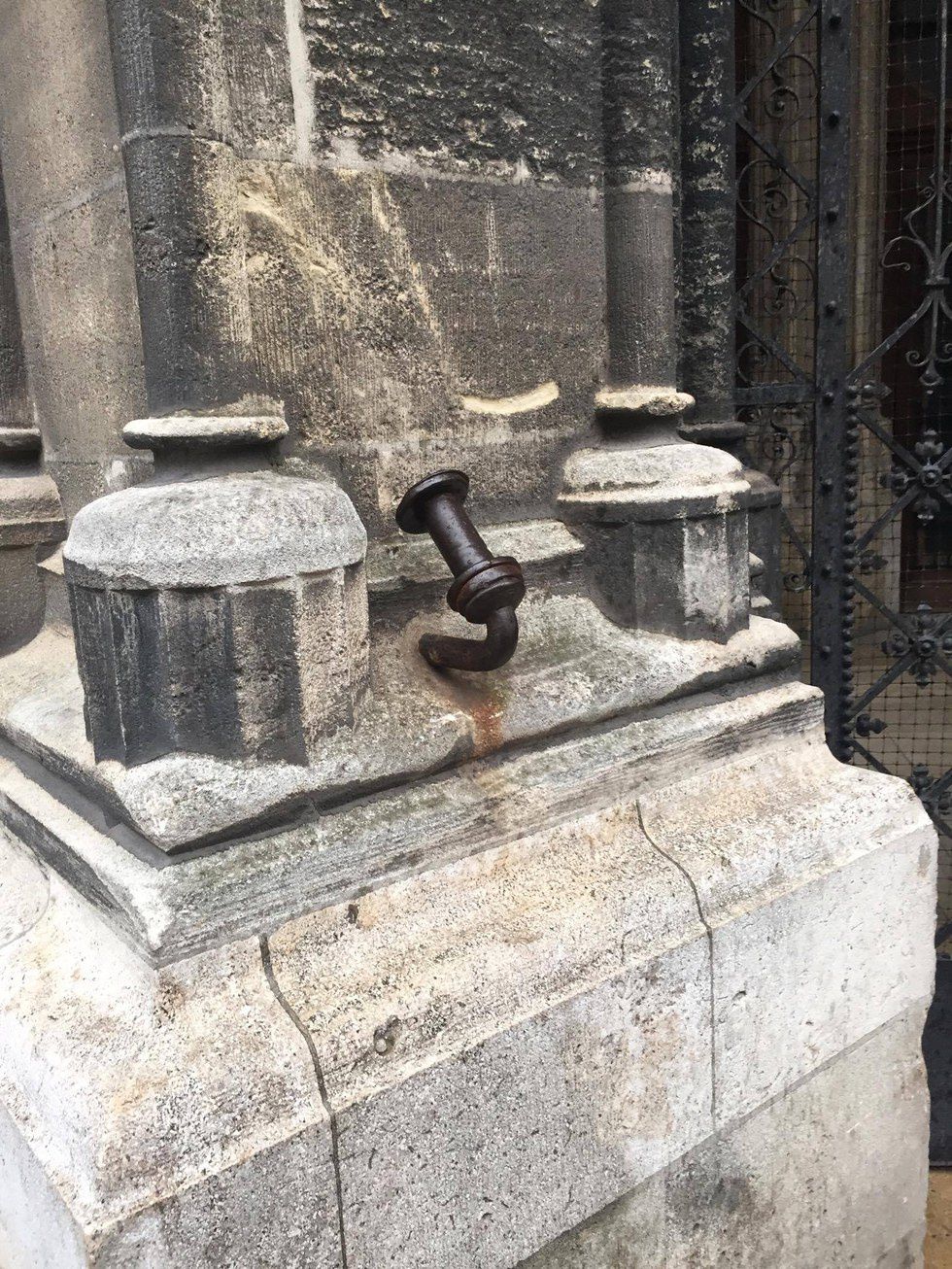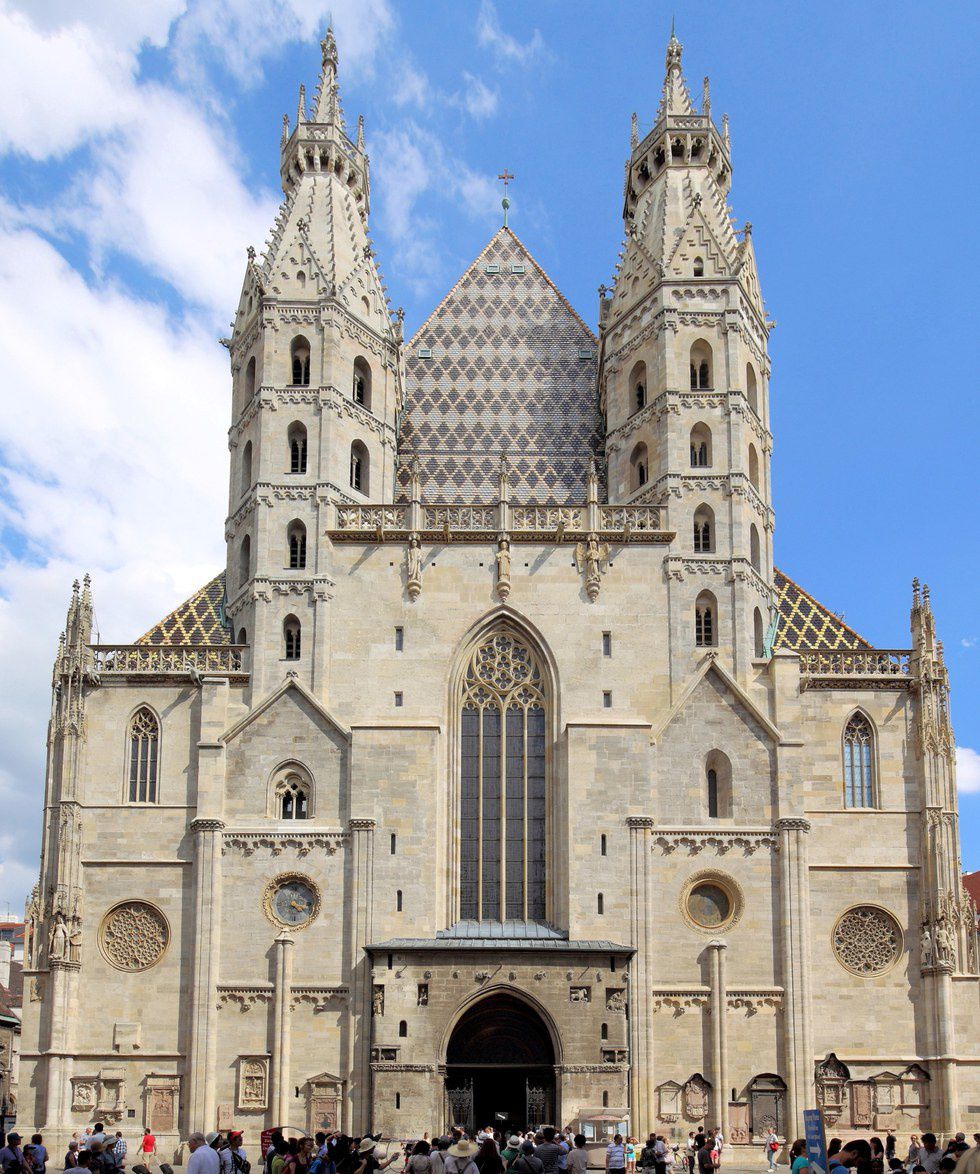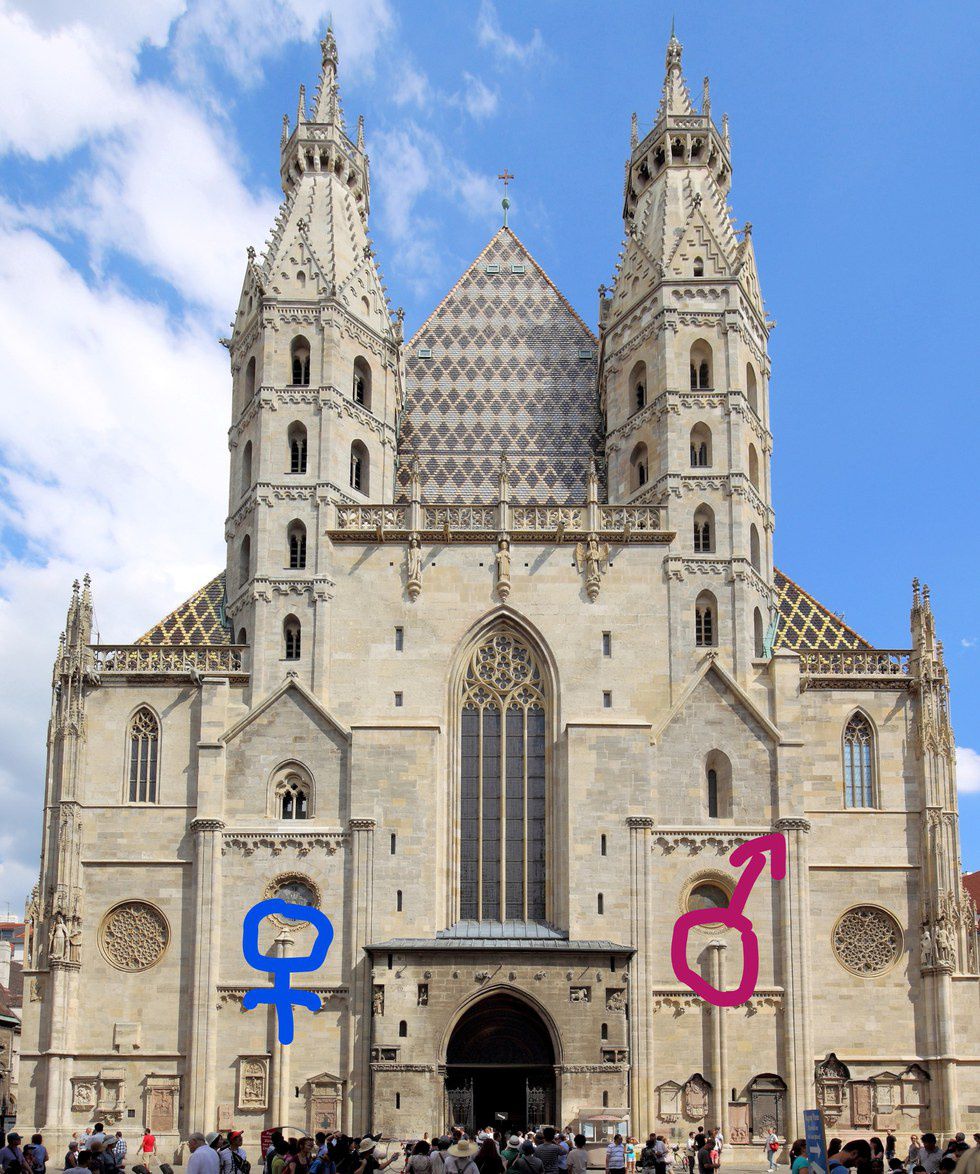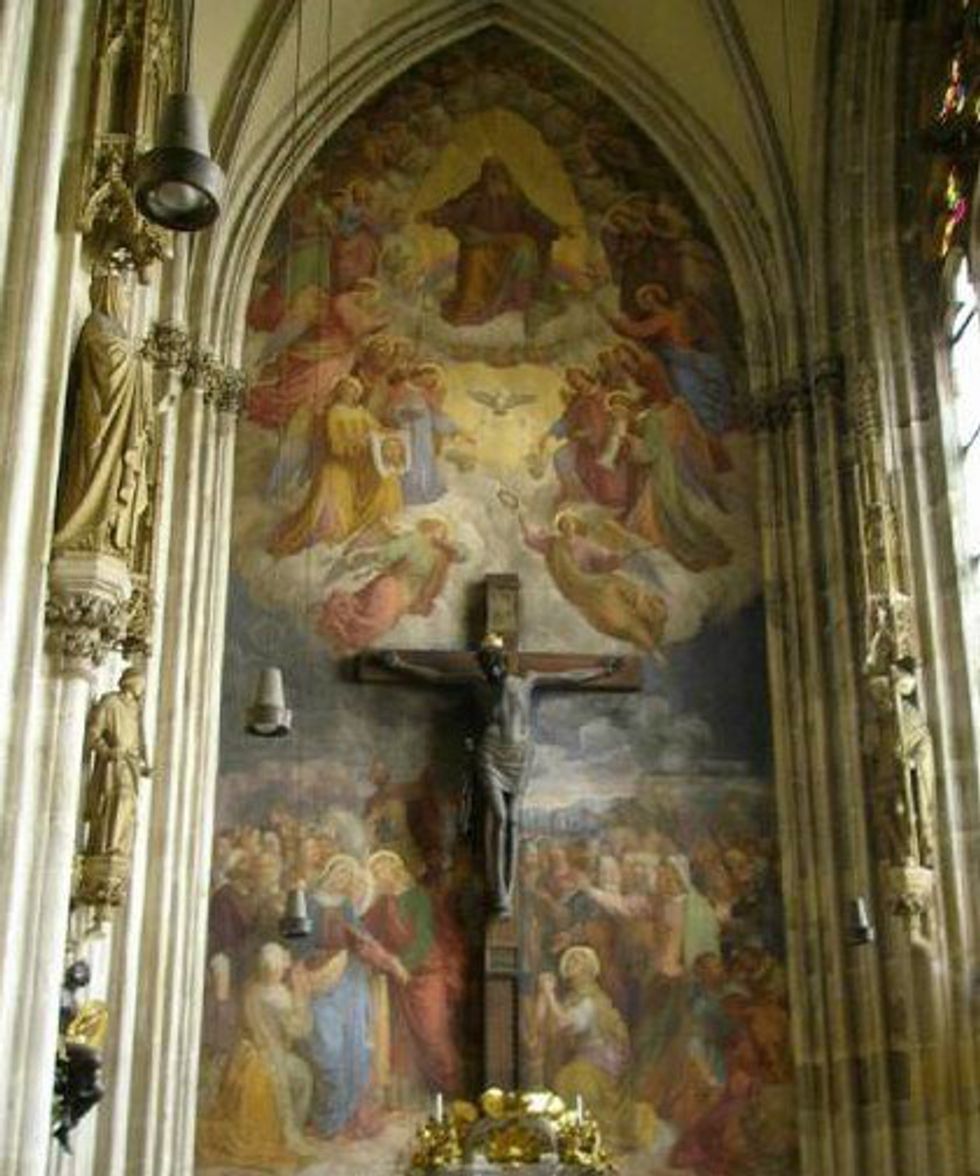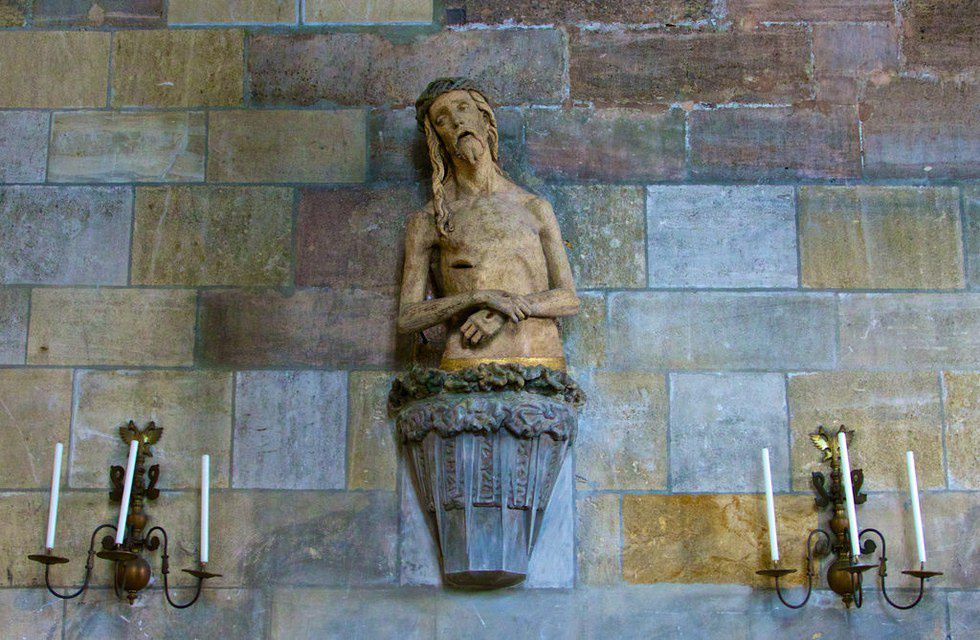St. Stephen’s Cathedral, the most well-known church in Vienna, Austria, is a true Gothic style Roman Catholic Church. St. Stephen's is the mother church of the Roman Catholic Archdiocese of Vienna. The cathedral, completed in the year 1160, burnt down and was rebuilt in the 14th century. This information you can get anywhere online, but I am about to tell you secrets about the cathedral you can't find on any website.
No. 1: The Freedom Handle
When facing the cathedral, on the left side there is a metal handle on the wall. This is the “freedom handle." The police cannot arrest anyone in the Church because it’s a sanctuary, so criminals would come to St. Stephen’s for protection. Because of all the criminals, the priest decided to close the cathedral. The handle was built after it was closed. If a criminal holds the handle, they are still considered a part of the church - the very handle in the picture below. If you get in trouble with the police, grab this handle and you won’t be arrested (just kidding!).
No. 2: Phallic Symbols
Back in the old days, men and women sat on different sides in the church. How do the outsiders know which side they should sit on? Look at the picture below.
Hint: It has something to do with a phallus. But where?
No. 3: Jesus With A Growing Beard
The Crucifixion scene is in the Chapel of the Cross in Stephen’s Cathedral. Jesus is said to have a beard that changes length. Because the beard of Jesus is made of horsehair, it contracts or lengthens when the humidity level changes.
No. 4: 0 5
Right next to the front gate of the cathedral, there are two numbers on the wall, protected by glass. One number is 0, the other is 5. It stands for letters O and E. The two numbers are secret code used during WWII for the revolution. The Germans never figured it out.
No. 5: The Toothache God
In the old days, the homeless slept in the cemetery. Legend has it that, one day, two homeless people woke up in the cemetery and saw this statue. They made fun of it saying that Jesus had a toothache. After a few days, they both had toothaches that no one could cure. They asked the statue for forgiveness and their toothaches went away. And thus this statue of Jesus became known as the Toothache God.




